Xenokratous Street: Shopping at the Farmers’ Market and...
Xenokratous Street in Kolonaki is one...
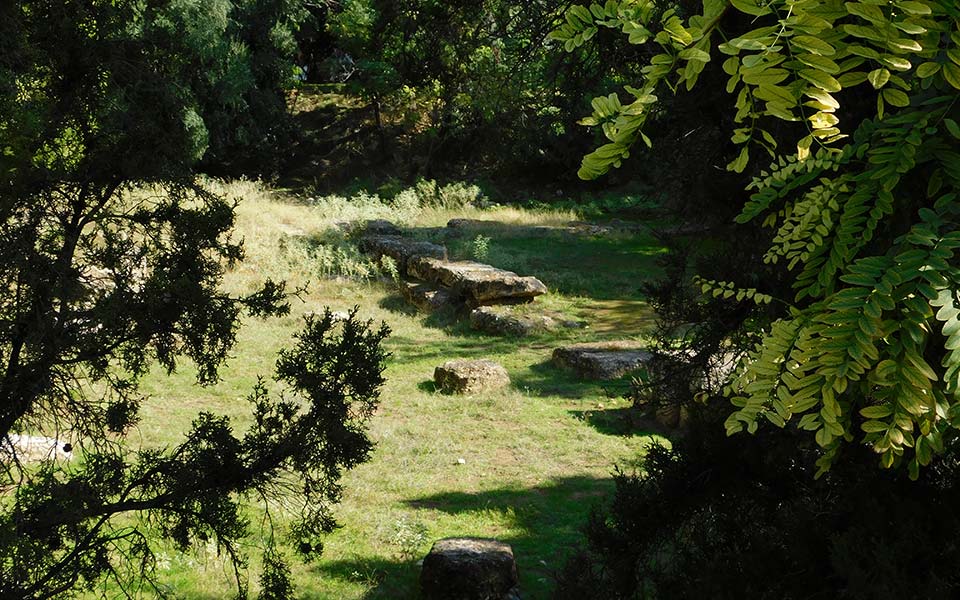
The site of Plato’s Academy is quite hard to find today.
© Shutterstock
The ancient Greeks were knowledgeable in astronomy, mathematics and engineering, and the technology in late ancient Greece was surprisingly similar to the technology of early modern times. Proof of that can be seen all over Athens – if you know where to look.
In the new guidebook Scientific Secrets of Athens, Dr Vassilios McInnes Spathopoulos guides the reader to the places no one interested in science should miss, from ancient sites like the 1st c. B.C. Tower of the Winds, known as the world’s first meteorological station, to operational telescopes and interactive science museums.
Following in the footsteps of some of history’s most influential scientists, you’ll also find yourself at some of the most interesting archaeological sites in the city; some of them well-known – others well-kept local secrets.
And since nothing adds to a learning experience like a good cup of coffee, a great nearby café, where you can “digest your knowledge”, is recommended for each.
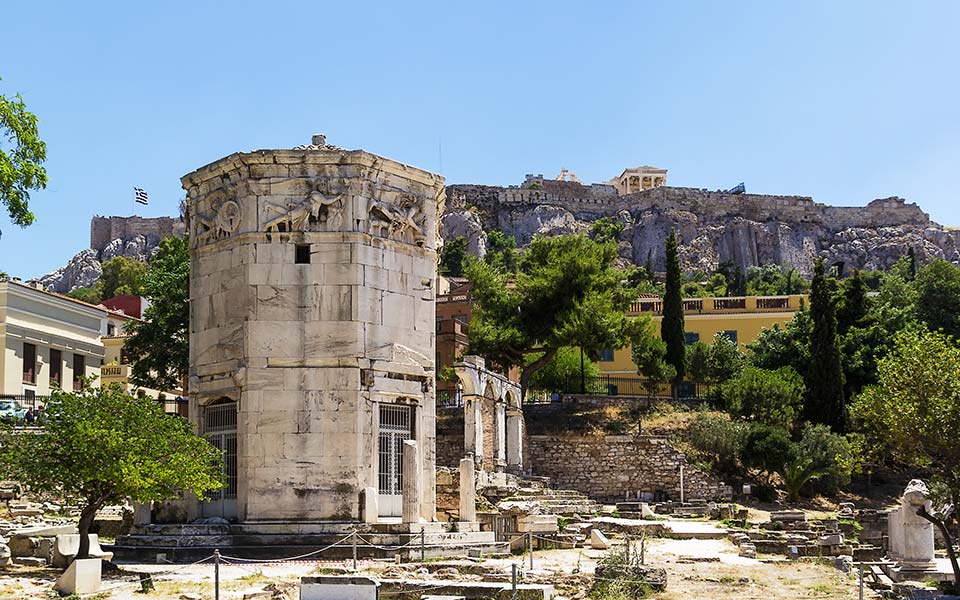
The Tower of the Winds, within the Roman Agora.
© Shutterstock
You’ve heard of both Plato and Aristotle, but did you know that they both founded schools in Athens, and that both sites are open to visitors today?
The archaeological site of Plato’s Academy is quite hard to find as it’s not clearly signposted, but with the help of your guidebook, you’ll find yourself standing right where the most educated people of Athens gathered from 387 B.C. to 86 B.C.
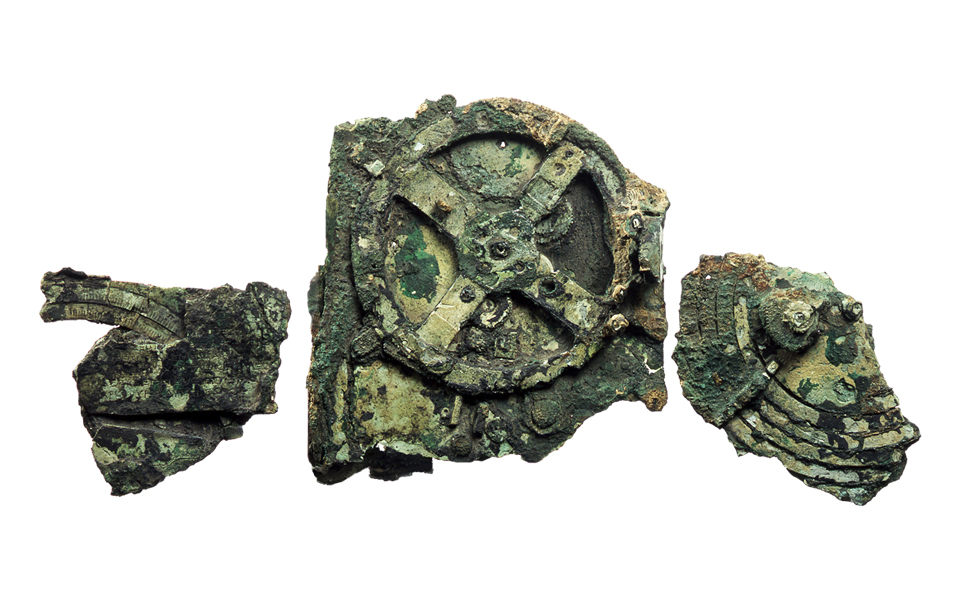
The Antikythera Mechanism
© National Archaeological Museum, Athens
To learn about the achievements of many of those ancient intellectuals, some museums are must-visits. The one-of-a-kind Museum of Ancient Greek Technology, for example, features working models of the technological inventions of ancient Greeks.
At others, many original artefacts are on display. At the National Archeological Museum, for example, one can view the actual 2nd c. B.C. Antikythera Mechanism – an ancient analog computer. Consisting of gears and dials, much like those used in clocks today, it was used to estimate the positions of celestial bodies in order to keep track of things like the calendar, the dates of festivals and the Olympic Games.
Aside from these, museums of contemporary science and planetariums are also included in the book.
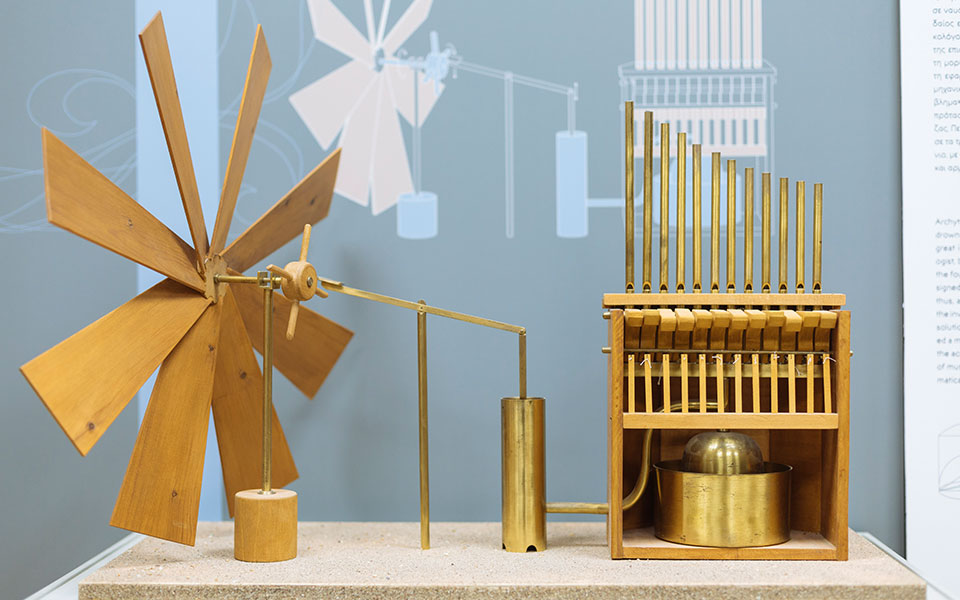
Models of ancient technological inventions at the Museum of Ancient Greek Technology.
© Nicholas Mastoras
If you prefer to spend time outdoors, the many famous hills of Athens make for an excellent and edifying outing. Spathopoulos begins at the Pnyx Hill, where one can visit the site of Meteon’s Observatory (5th c. B.C.). This is where the ancient astronomer placed his observational instrument, the “Heliotropion”, used to calculate the calendar, because it was the perfect spot to note the summer and winter solstice (seen from here, at summer solstice, the sun rises behind the peak of Lycabettus Hill, at winter solstice, behind the peak of Hymettus, and at the equinoxes, behind the Acropolis).
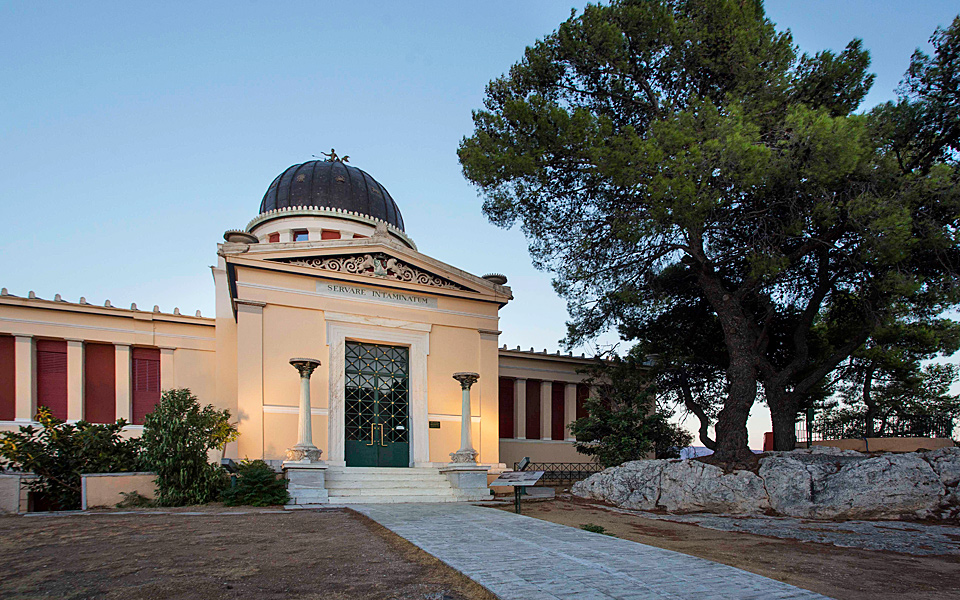
The National Observatory of Athens
© Alexandros Philippides
Moving into modern times, on the neighboring Hill of the Nymphs one can visit the National Observatory of Greece. Among the many interesting things to see at this site are a copy of Johann Friedrich Julius Schmidt’s map of the moon, which he created here, and a working plexiglass model of the Antikythera Mechanism.
But the most interesting fact about this site, which was founded in 1842, is that its original purpose was one similar to that of the Heliotropion; it was also built to measure time. To do so, telescopes were used to view the passage of stars. Every day at noon, the observatory would signal to the nearest church, the Metropolitan Cathedral of Athens, to ring its bells, and other churches would follow, spreading the information about the time throughout the city.
Right next to the Metropolitan Cathedral of Athens is a building every tourist passes but few notice: the Church of Saint Eleytherios. Why is it interesting?
Find out in an excerpt from Scientific Secrets of Athens below.

© Scientific Secrets of Athens
Background:
In ancient Greece each city state or region followed its own calendar. The Athenian or Attic calendar for example, used by ancient Athenians to set the days for the religious festivals, consisted of 12 lunar months lasting 29 or 30 days, giving a total sum of 354 days. This meant that the calendar slid by approximately 11 days with respect to the seasons each solar year and to make up for this, an additional (13th) month with a duration of 29 or 30 days (usually the month Poseideon II), was added on specific years. The Athenian calendar was thus a lunisolar one, following both the seasons of the solar year and the phases of the moon (much like the Metonic Cycle).
The main 12 months were the following: Hecatombaeon, Metageitnion, Boedromion, Pyanepsion, Maemacterion, Poseideon, Gamelion, Anthesterion, Elaphebolion, Munychion, Thargelion, Scirophorion. They were named after gods (for example Poseideon after the god of sea) and festivals (for example Anthesterion, after the festival of Anthesteria, a yearly festival in honour of the god Dionysus). Most ancient Greek calendars followed similar patterns.
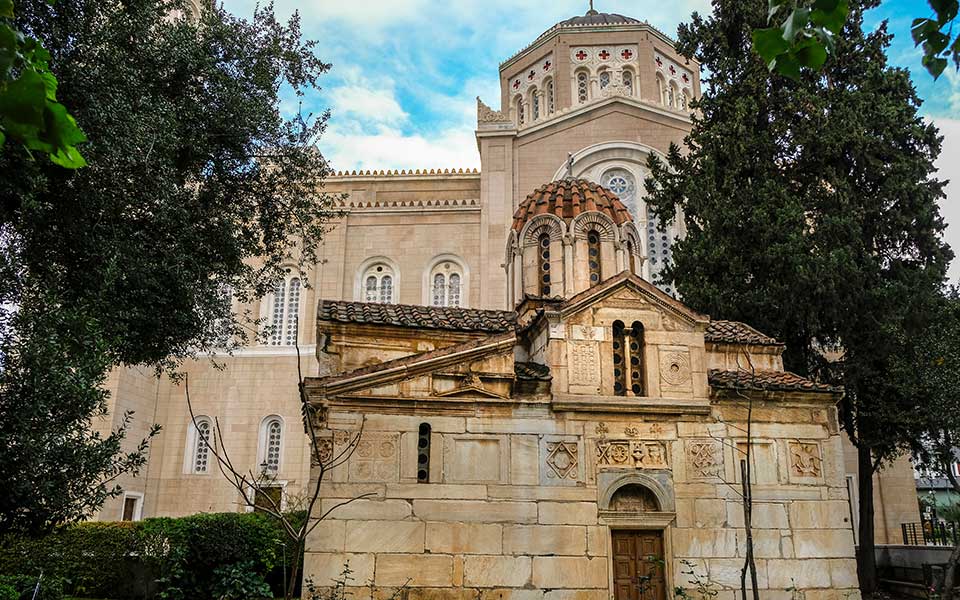
The Church of Saint Eleytherios
© Shutterstock
The church of St. Eleytherios or otherwise known as Panagia Gorgoepikoos, was constructed some time between the 12th and 15th centuries (actual estimates differ) and is located at the Metropoleos (Cathedral) square next to the Metropolitan Cathedral of Athens.
What is interesting from a scientific point of view, is a carved ancient calendar which is preserved as the western frieze of the church. This was taken from an (unknown) ancient building of Athens and incorporated in the Christian temple. Some archaeologists consider it a work of the 2nd or 1st century B.C., or even later (although consensus does not exist for an exact dating). It is made of white marble and has a total length of approximately 6 m, and a height of just under half a meter.
The sculpture is split into sections corresponding to the calendar months. Each section includes the personified figure of a month and the corresponding zodiac sign. The two sections representing the months of Anthesterion and Elaphebolion are actually missing as they were taken out so that the frieze would fit the church structure. Between two successive parts there are depictions of the agricultural occupations corresponding to that time of the year (such as the pressing of grapes) or of the month’s festivals, for example, the Panathenaea (the most important festival of ancient Athens). The meaning of other personified figures is still a matter of debate but some of them could be representing the seasons of the year. The brightest star in the sky, the dog-star Sirius, is also portrayed. Note finally, that crosses were carved at a later date in order to incorporate the sculpture into the christian church.
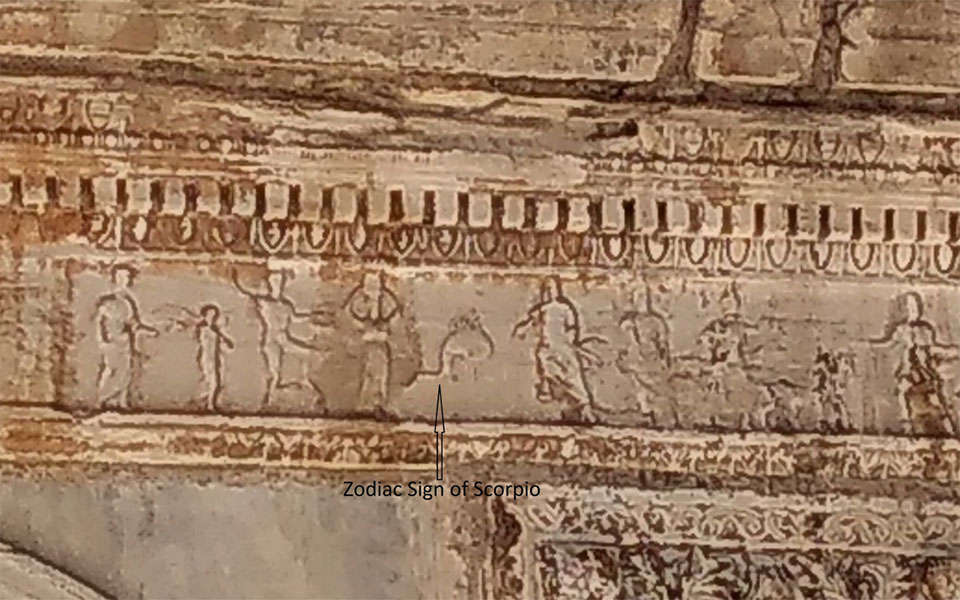
Part of the carved calendar at the church of St. Eleytherios.
© Scientific Secrets of Athens
Where to find it:
The church of St. Eleytherios is located at the Metropoleos square, next to the Metropolitan Cathedral of Athens (and is thus is also known as the “Little Metropolis”), and the carved calendar can be viewed on the exterior of the building just above its entrance.
Where to digest your knowledge:
Kafeneio Oraia Ellas, is an impressive cafe – restaurant, decorated in the theme of an old traditional Greek cafe (kafeneio), also selling typical Greek products. If you are lucky enough to get a window table, you will be rewarded with great views of the Acropolis. • Address: Mitropoleos Str. 59, Athens 105 55 • Phone: +30 2103216850 • Website: https://www.facebook.com/ellasoraia/
Did you know?
That the first month of the Athenian calendar, Hekatombaion, was named after the hekatombe, the sacrifice of a “hekaton (hundred) + bous (ox)” held during an Athenian festival. In modern English, the word “hecatomb” is used to describe a large – scale sacrifice or slaughter.
You can read more about Scientific Secrets of Athens, and order a copy here.
Xenokratous Street in Kolonaki is one...
Exploring the eateries, stories, and shifting...
Discover how ancient Greek architecture inspired...
Six Athenians tell us about their...